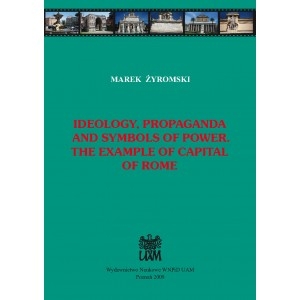Ideology, propaganda and symbols of power. The example of capital of Rome
WNPiD UAM

Wysyłka:
Niedostępna
Sugerowana cena
Nasza cena
18,17 PLN
Oszczędzasz 30%
Najniższa cena w ciągu ostatnich 30 dni: 0,00 zł
(...) This book presents the question of continuity and change of symbols of power on the example of the capital of Rome. Rome functions as the state’s capital for over two thousands years (without any significant interruption) ? and so, longer than any town in Europe. Starting with the ancient Roman Empire (taking the year of 754/753 B.C. as the traditional date of the foundation of Rome) up to the transfer of capital of Imperium Romanum to Constantinople in 330 A.D. Nevertheless, after the division of Roman Empire into two parts after the death of Theodosius the Great (in 395 A.D.) Rome became the capital of Western part ? the separate state. Together with rise of Christianity (and with its recognition as a state religion by Constantine) Rome became the seat of a bishop of Rome (later on known as the pope). After the collapse of the Western Roman Empire (in 476) it was the Christianity and papal Rome which enabled the continuity of both the position of Rome and the continuity of ancient culture and civilization. During the Medieval times Rome strengthened its position not only as the capital of papal state but first of all as the capital of the Western Christianity.
Opis stanowi fragment Wstępu
Szczegóły
Autor: Marek Żyromski
Wydawnictwo: WNPiD UAM
Kod paskowy: 9788360677728
ISBN: 978-83-60677-72-8
Rok wydania: 2020
Ilość stron: 252
Format: 1480x2120
Oprawa: miękka
Recenzje
Klienci, którzy kupili oglądany produkt kupili także:
Starożytna Grecja od kuchni
Wydawnictwo Naukowe PWN
Obrót prawny nieruchomościami w Krakowie i podkrakowskim Kazimierzu w średniowieczu
Wydawnictwo Uniwersytetu Łódzkiego





